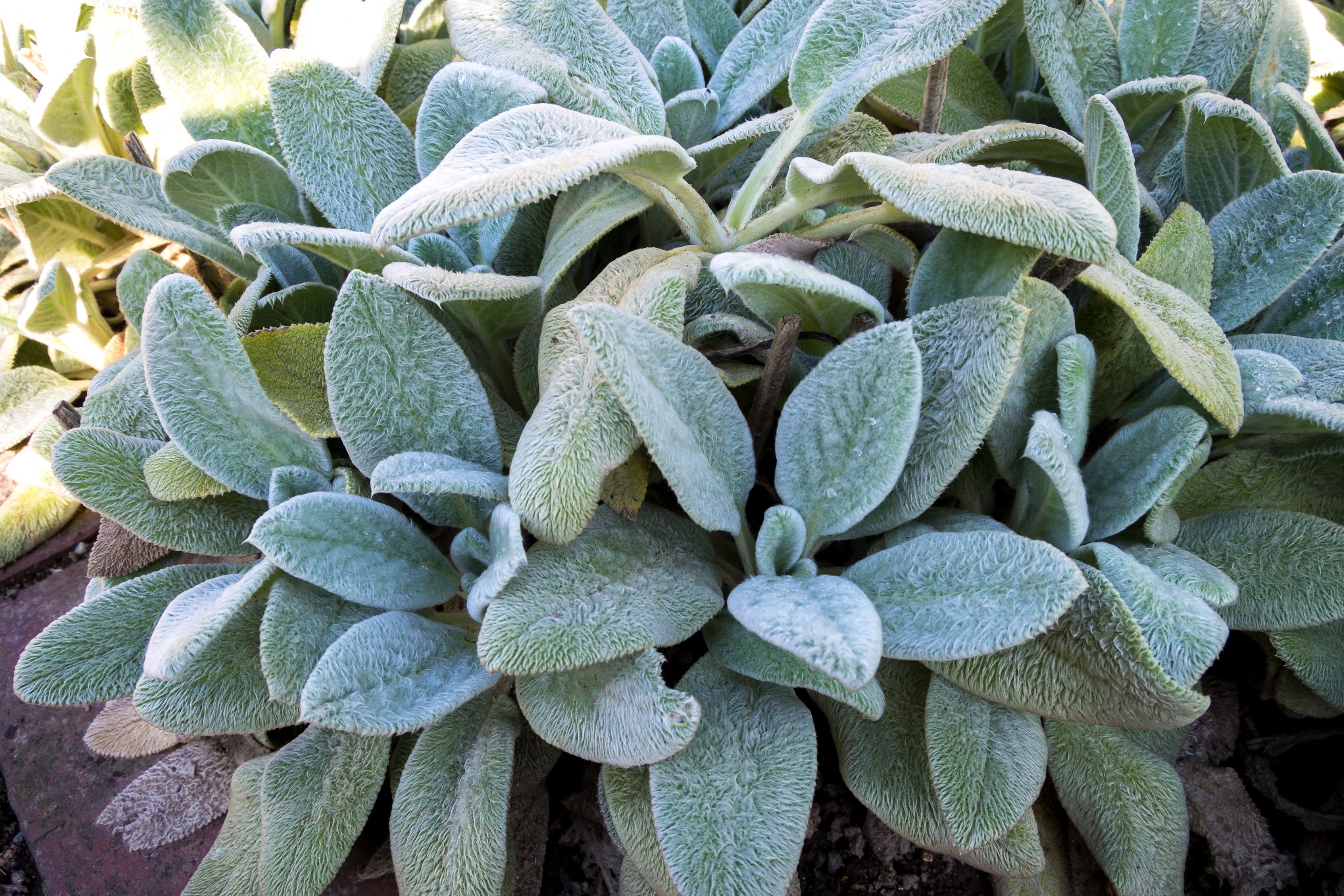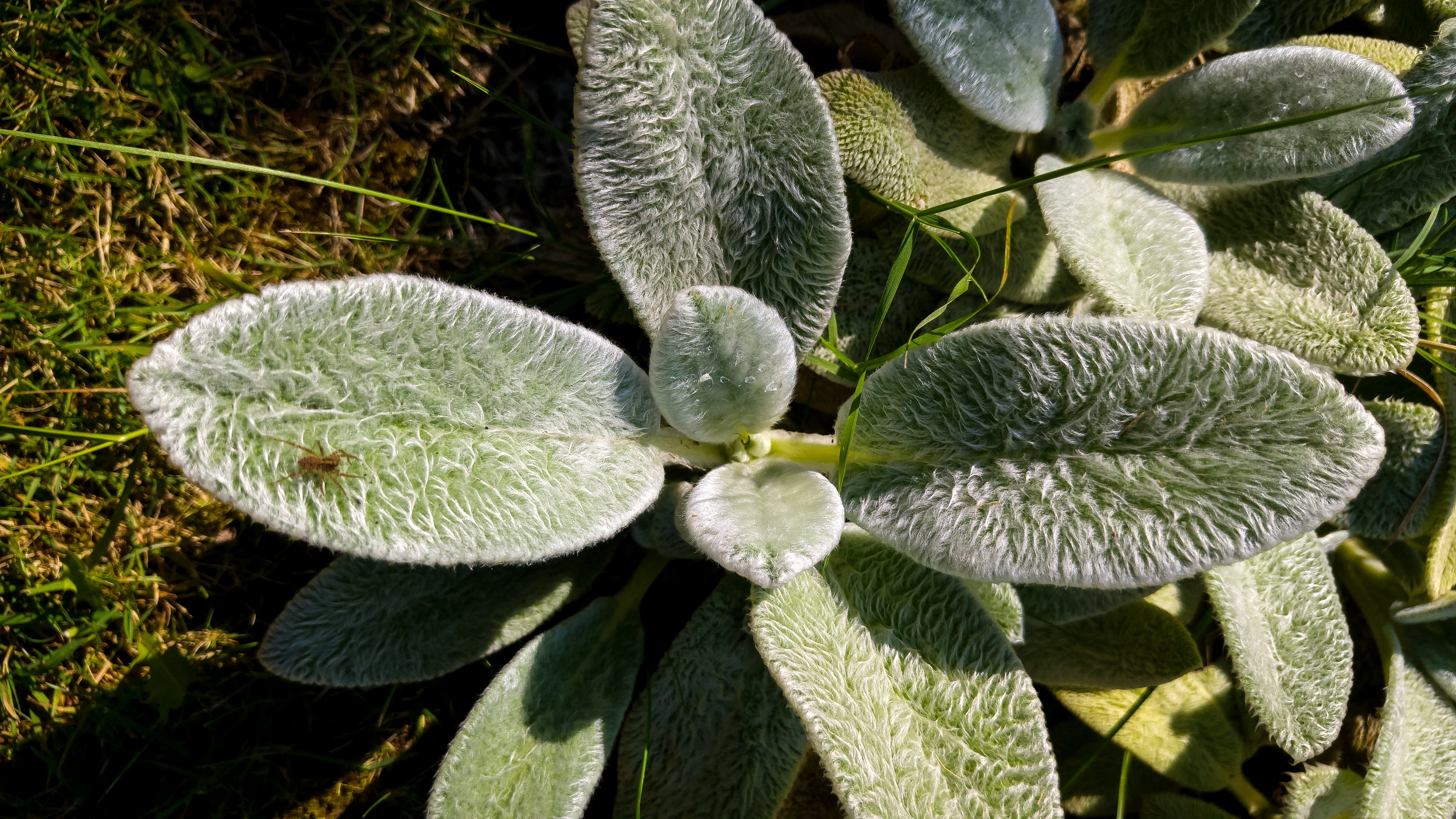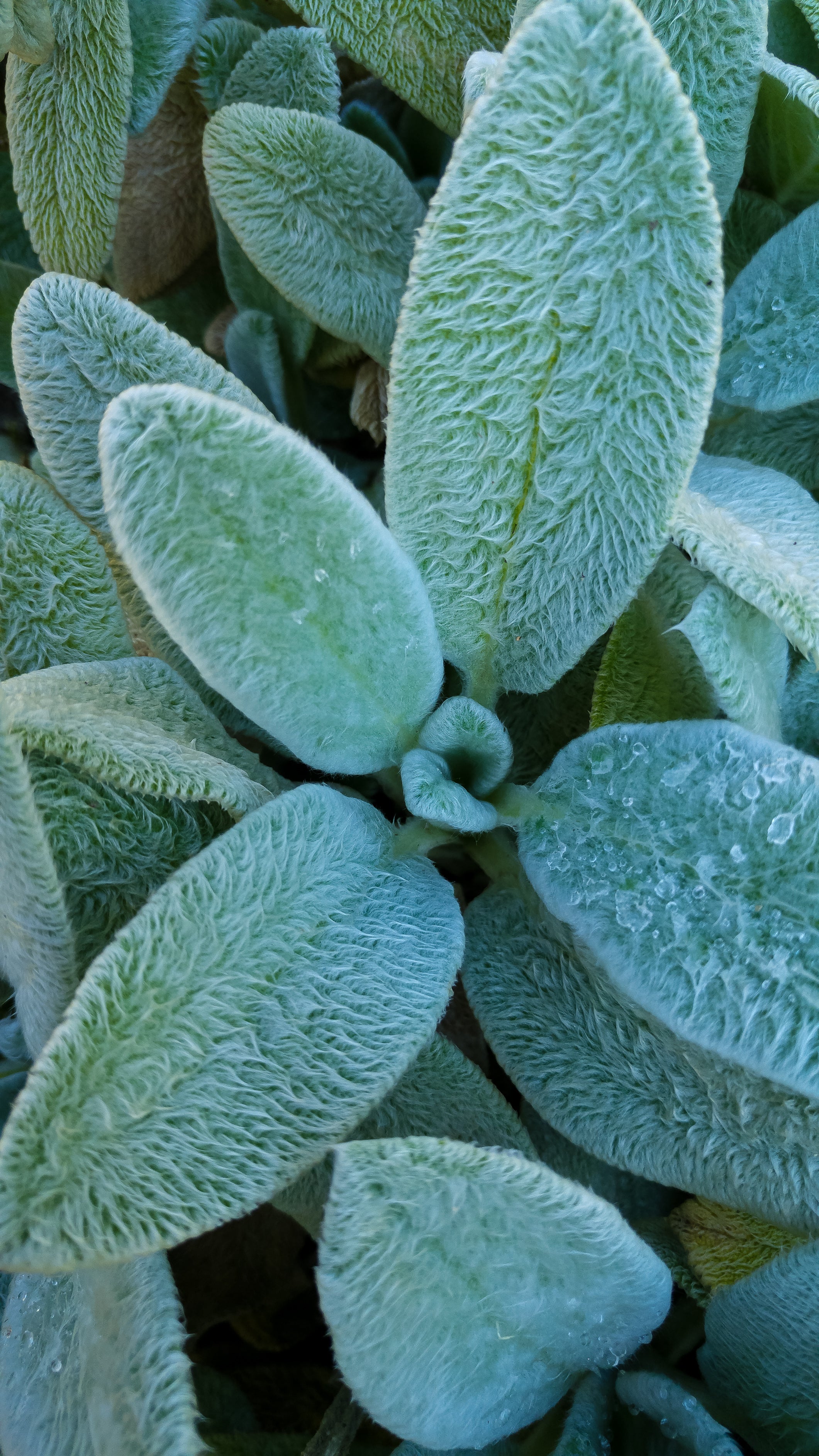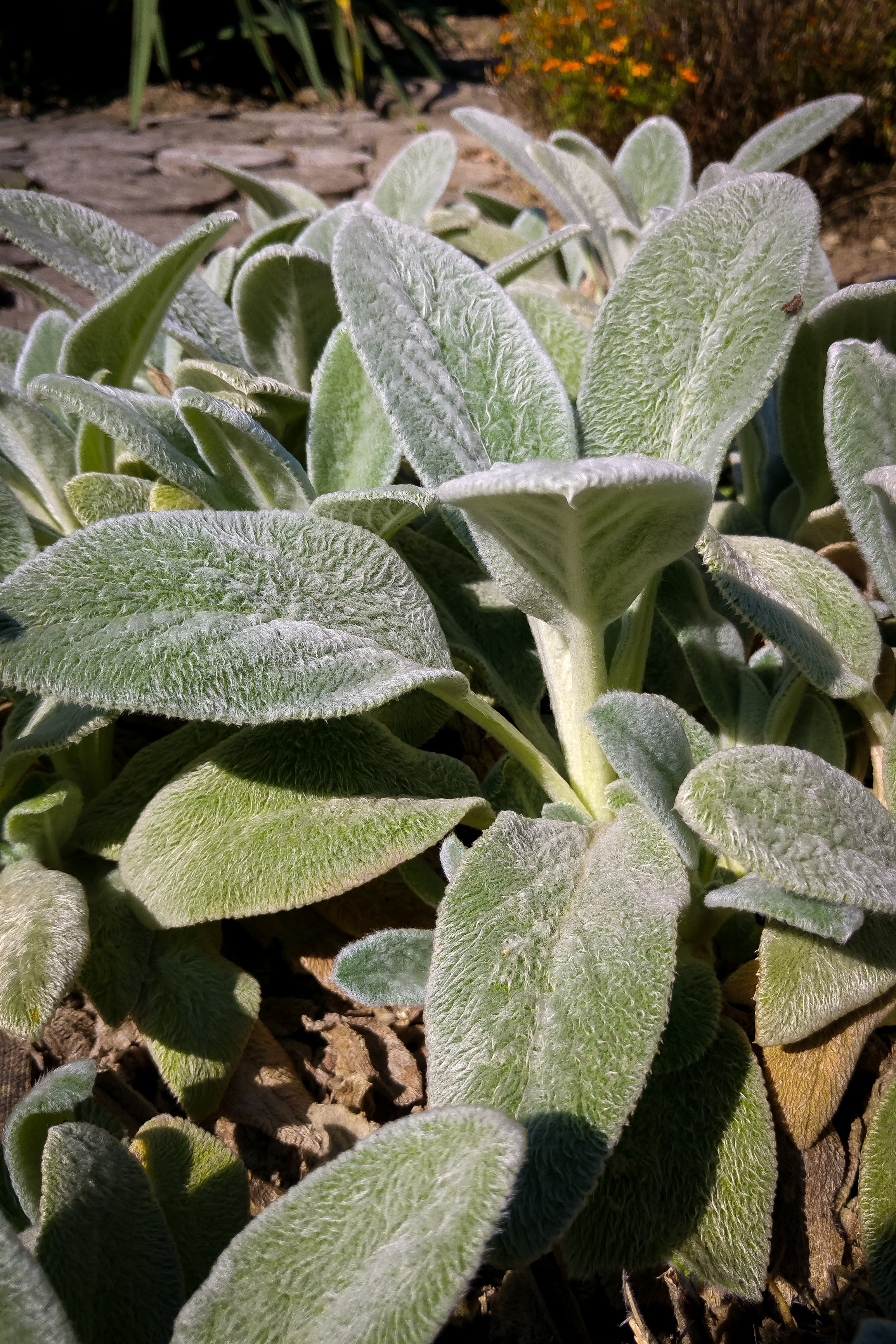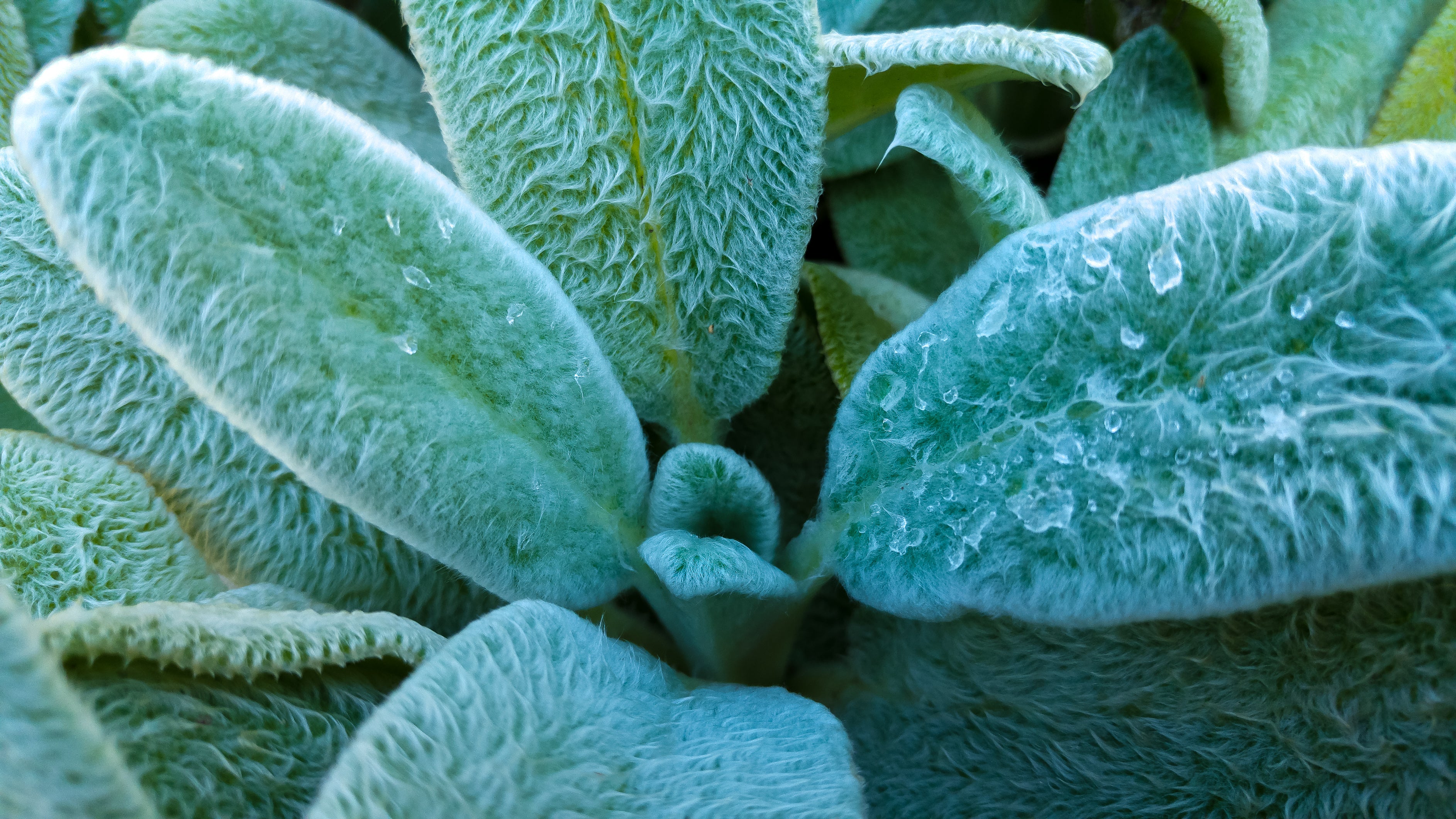Stachys byzantina 'Silver Carpet'
Approx. 0.5 litre pot
About this cultivar:
Stachys byzantina 'Silver Carpet' is grown primarily for its thick, soft, velvety, silvery leaves which typically form a rapidly spreading mat that looks something like a ….silver carpet. This cultivar is perhaps most noted for the fact that it rarely produces flower spikes.
The species is native to Turkey, Armenia, and Iran - the name is presumably referring to classical Byzantium. The common name is Lamb’s Ear – presumably referring to the how the leaf shape and texture represents a classical lamb’s ear.
The plant tends to be evergreen but can "die" back during cold winters and regenerate new growth from the crowns. Not just ground cover but a great back drop to long flowering plants such as roses.
- Position: Full sun, partial shade
- Soil: Almost any soil, grows well in Ballyrobert
- Flowers: None really so substitute 'interest'!- January, February, March, April May, June, July, August, September, October, November, December
- Other features: Grows well in Ballyrobert, Great Ground Cover
- Hardiness: Fully hardy, grows well in Ballyrobert, H7 - Hardy in the severest European continental climates (< -20°C)
- Habit: Clump forming, Mat forming
- Foliage: Evergreen
- Height: 10 - 25 cm (0.3 - 1 ft)
- Spread: 30 - 90 cm (1 - 3 ft)
- Time to full growth: 2 to 5 years
- Plant type: Herbaceous Perennial
- Colour: Green, grey
- Goes well with: Roses
About this genus:
Stachys is one of the largest genera and a member of the mint family (Lamiaceae). Estimates of the number of species in the genus vary from about 300, to about 450. The distribution of the genus covers Europe, Asia, Africa, Australasia and North America. Common names include heal-all, self-heal, woundwort, betony, lamb's ears, and hedgenettle.
Stachys was named by Linnaeus in Species Plantarum in 1753. The name is derived from the Greek word (stachys), meaning "an ear of grain",and refers to the fact that the inflorescence is often a spike. The common name woundwort derives from the past use of certain species in herbal medicine for the treatment of wounds. Wood betony, Stachys officinalis, was the most important medicinal herb to the Anglo-Saxons of early medieval times.
In most species, the leaves are softly hairy. The flowers are clustered in the axils of the leaves on the upper part of the stem, varying from white to pink, purple, red or pale yellow.They can be found growing in wastelands, grasslands and woodland edges. It thrives in any damp soil in full sun or in light shade.
Stachys is like one of those families where every member is exceptional for something different—one bold, another soft, the next strong or perfectly smart—and they all get along with just about everybody. Diverse, sturdy, dependable, calling them mere ground covers is an understatement. Indispensable is more accurate.

